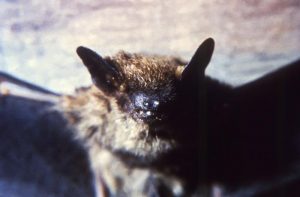By NewsDesk @infectiousdiseasenews
Health officials with the San Juan Basin Public Health (SJBPH) are reminding the public that the risk of contracting certain animal-borne diseases increases during the warmer weather when people spend more time in the outdoors.
Zoonotic diseases are more common during warm weather months when humans and animals are frequently in close contact. SJBPH stresses the importance of controlling the presence of rodents and mosquitoes around homes as well as wearing insect repellant and appropriate clothing when heading outdoors. Additionally, pets should be kept up to date on vaccinations, and protected from fleas and ticks. Wild animals should not be fed or handled, especially those that appear sick, nor should dead animals or animal waste be handled. It is important that children are also aware of these precautions.
Rabies

Rabies is an infectious viral disease that affects the nervous system of humans and other mammals. People usually contract rabies from the bite or scratch of a rabies-infected animal. If a bat has been present in a room in which someone sleeps, it is important to trap and test the bat for rabies. SJBPH should be called for further guidance or to report an encounter with a suspect animal. Vaccinate pets to keep them and their humans safe.
Plague
Plague is caused by bacteria that can be transmitted to humans by the bites of infected fleas or by direct contact with infected animals. Plague is frequently detected in rock squirrels, prairie dogs, wood rats, and other species of ground squirrels and chipmunks. SJBPH investigates prairie dog population die-offs for the presence of plague. If an active colony of prairie dogs suddenly disappears, please report this to SJBPH.
West Nile Virus
West Nile Virus is carried by mosquitoes and can be passed on to humans through mosquito bites. This disease can cause encephalitis (inflammation of the brain) and meningitis (inflammation of the lining of the brain and spinal cord). Insect repellent should be used when going outdoors. Standing water should be emptied around residences to reduce the number of mosquitos.
Hantavirus

Image/CDC
Hantavirus Pulmonary Syndrome (HPS) is a severe, sometimes fatal, respiratory disease. Hantavirus is carried by wild rodents, particularly deer mice, and is present in their droppings, urine, and saliva. Dried droppings or urine can be stirred up in dust and humans may contract hantavirus by breathing in the contaminated air. When cleaning up mouse droppings, a mask should be worn and the area should be ventilated by opening windows and doors, with all droppings sprayed down with a bleach solution before vacuuming or sweeping.
Tularemia
Tularemia is maintained in the rodent rabbit populations and is transmitted by insect bites, direct transmission, or inhalation or ingestion of the bacteria. The infective dose is very small and the bacterium can persist for long periods of time in the environment in water, soil, and carcasses. Wear gloves when handling animals while hunting, trapping, or dressing animals. When mowing or landscaping, do not mow over sick or dead animals.
Tick Borne Diseases

Colorado tick fever is the most common tick-borne disease in Colorado, though most cases go unreported. It’s a viral illness characterized by fever, headache, body aches, nausea, abdominal pain and lethargy. Complete recovery may take two to three weeks. The disease is not life-threatening and infection results in lifelong immunity. There’s currently no preventative vaccine or effective treatment except to let the disease run its course.
Rocky Mountain wood ticks can also spread Rocky Mountain Spotted Fever. There may be a sudden onset of high fever, headache, chills, and muscle aches. A rash often appears a few days later. Prompt medical attention is extremely important because Rocky Mountain Spotted Fever can be fatal if treatment is delayed. The illness can be cured with antibiotics.
- West Nile virus death reported in San Luis Obispo County
- Colorado plague: Confirmed in death of 10-year-old child
- Hawaii: Bovine TB reported in Moloka`i, 1st case in 25 years
- Minnesota: Legionnaires’ disease cases linked to Ramada by Wyndham Albert Lea hotel
- Nepal: Three human rabies deaths reported in past month in Kavrepalanchok District
- Plague death in Colorado (possible)
- India: Zika cases reported in Kerala state

